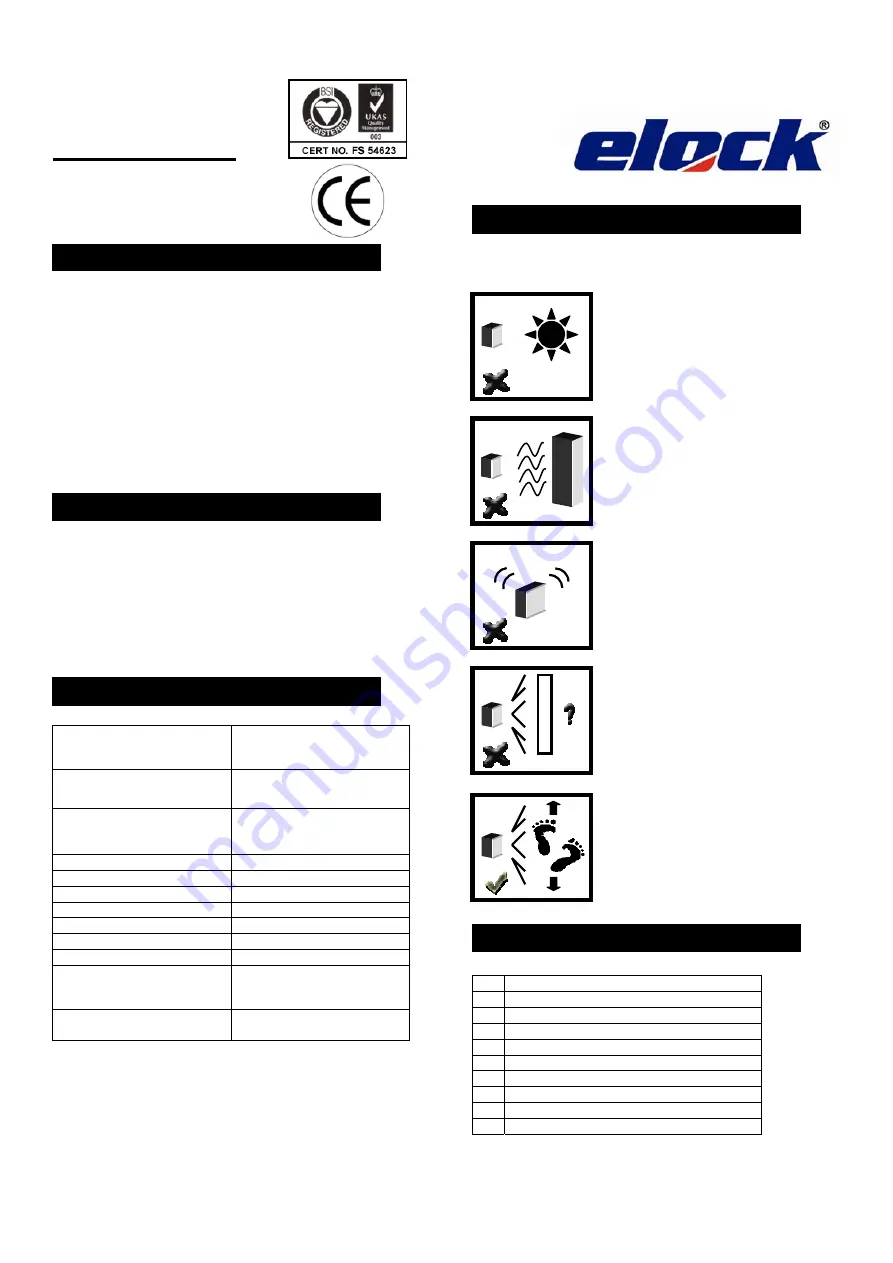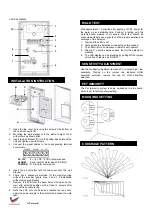
V.EPIR-A03052008
Passive Infrared Detector
With Pet Immunity
•
ADNIL passive infrared detector by means of dual element
(model EPIR-A) or quad element (model EPIR-B)
pyroelectric sensor immune to the temperature changes.
•
Employs optically coupled MOSFET technology switches
with super efficiency (only available for EPIR-A11 or B11).
•
High immunity against false alarms and electro-magnetic
fields.
•
Manually adjustable sensibility, temperature compensation
of alarm threshold for proper functioning in environments
with notable temperature changes.
•
Offers exceptional level of detection capability and stability
for trouble-free installation.
•
EPIR-A10
– Duo element detector with pet immunity and coil
relay
•
EPIR-A11
– Duo element detector with pet immunity and
solid-state relay
•
EPIR-B10
– Quad element detector with pet immunity and
coil relay
•
EPIR-B11
– Quad element detector with pet immunity and
solid-state relay
Infrared sensor
Dual element (EPIR-A)
Quad element (EPIR-B)
Input voltage
9 ~ 16VDC, 12V
(Recommended)
Current consumption
Standby ~9mA; Alarm
~38mA (Relay)
10-12mA (Solid -state)
Solid-state alarm output 100mA,
N.C
only
Coil relay alarm output
2A, N.C / N.O selectable
Alarm period
Approximately 1 second
Tamper switch
N.C
LED indicator
Red, can be disabled
Detectable speed
0.3 ~ 1m/sec
Dimension
117 x 66 x 45 mm
Unit weight
94g (EPIR-A10, B10)
90g (EPIR-A11, B11)
Operating temperature
-20°C ~ 60°C or
-4°F ~ 140°F
Avoid common false alarm sources specially
DO NOT
run
cables parallel to AC main wires!!!
1
Cable knockout access
2
Terminal block
3
N.C / N.O jumper
4
LED ON / OFF jumper
5
LED
6
Tamper switch
7
Mounting setting
8
Infrared sensor (DO NOT TOUCH!)
9
Sensitivity adjustment jumper
10
Corner knockout
ADNIL
DESCRIPTION
SPECIFICATION
FAMILY MODELS
INSTALLATION HINT
www.elock2u.com
Avoid installing the detector facing
directly or reflected by sunlight, car
head lights, or bright surfaces such as
mirror and windows.
Avoid mounting the detector above air
vents, lamps, or equipment that may
change the environment temperature
rapidly. These areas can radiate or
direct heat over to cause nuisance
tripping.
Mount the detector on a stable surface
to prevent nuisance tripping caused by
the vibration.
Ensure that there are no obstructions
such as furniture, plants in the field of
view, which may create a blind spot of
the detector.
Detection is most effective when the
movement is “across” the detection
zones rather than “toward” the
detector.
PARTS IDENTIFICATION




















